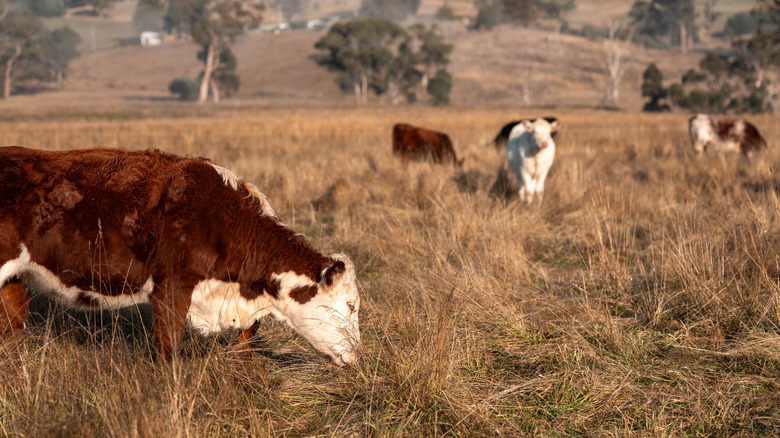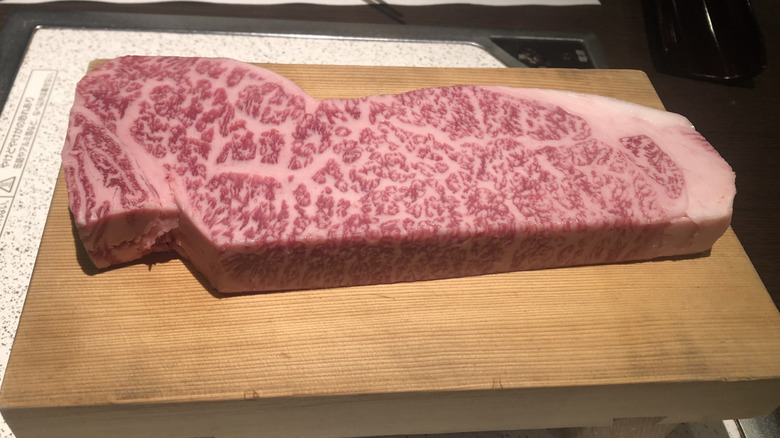What Makes Australian Wagyu Beef Different From Its Japanese Counterpart
Wagyu, which literally means "Japanese beef/cow," is widely regarded as the best beef in the world. Its perfect marbling, sweetness, and melt-in-the-mouth texture is truly out of this world — I know, because I've had the pleasure of eating an A5-grade Kobe Wagyu steak in Kobe City, Japan. There's really nothing like it.
Generally, Japan does not export its special Wagyu cattle, but it did allow limited exports between 1975 and 1997, which is how the American and Australian Wagyu industries came into existence. The genetics Australia imported at that time launched a strict breeding program that produces both 100% Wagyu cattle and crossbreeds between Wagyu and other breeds like Angus. Today, the country has around 30,000 fullblood Wagyu cattle and 330,000 crossbreeds with Wagyu influence. While this is the second-largest Wagyu herd in the world, it's tiny next to Japan's herd of around 1.8 million.
The crossbred nature of the majority of Australian Wagyu is one of the main ways it differs from Japanese Wagyu. Another is the feeding period : Wagyu cattle in Japan are fed for 600 days or more, while Australian Wagyu cattle have a shorter feeding time between 350 and 450 days. The results of these genetic and diet strategies are distinct tastes and textures. While Japanese Wagyu is known for its sweetness and melty texture, Australian Wagyu is typically less sweet and has lower marbling, leading to a firmer texture.
Diet and grading systems make the difference
Japanese Wagyu also eat very expensive feed on a strict feeding regimen, and grazing space is limited and more expensive due to Japan's mountainous terrain. Because of this, Japanese Wagyu demands very high prices compared to its Australian counterpart. While Japanese beef remains the pinnacle, the Australian market serves a slightly lesser but still exceptionally high-quality product for a more affordable price.
The two types of beef also have different grading systems. Australian beef is given scores from MS0 to MS9+, and only scores of MS6 and above are officially recognized as Wagyu. To get a score of MS9+, the meat must be fullblood Wagyu. Japanese Wagyu, on the other hand, has a grading system with both a letter and a number. The number, ranging from one (worst) to five (best), encompasses a variety of grading systems, including Beef Marbling Score (BMS), the Beef Color Standard (BCS), and the Beef Fat Standard (BFS), as well as firmness and texture. The letter, ranging from C (worst) to A (best), refers to the yield of meat from the cow. The best of the best cuts earn the grade A5, and they taste better than anything you can imagine.
If you're interested in trying Wagyu, try out some more affordable American or Australian Wagyu if you're planning to cook it yourself (and here are some tips on how to do that without royally screwing it up). And if you want a restaurant experience, find a location with genuine Japanese Wagyu.

